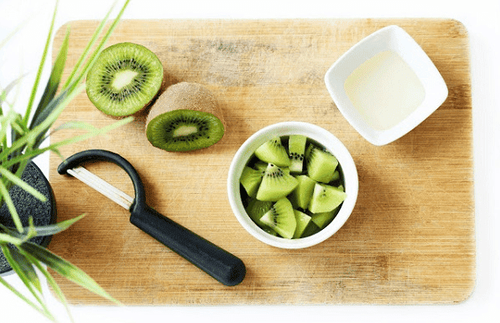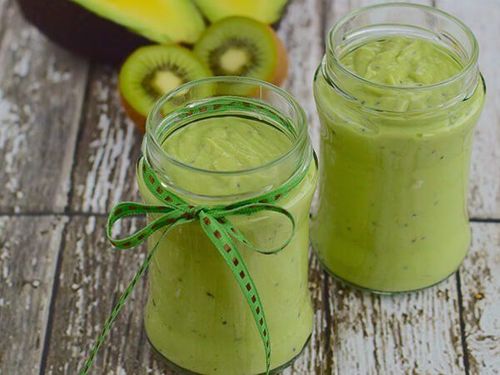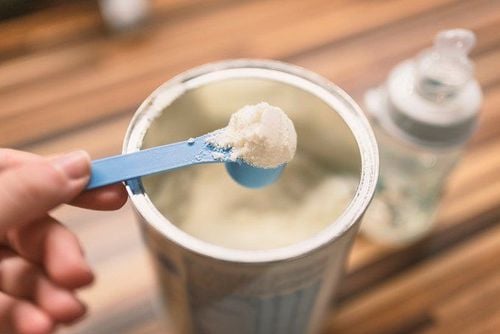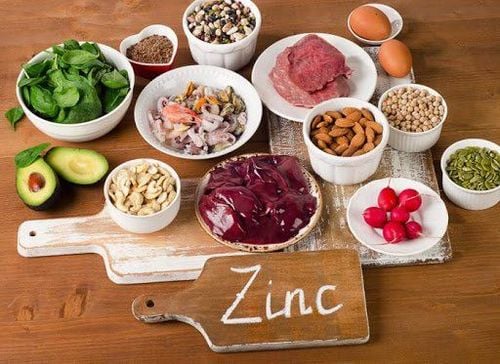As infants develop an interest in solid foods, they frequently exhibit a desire to explore new flavors and textures. Therefore, can young children eat kiwi? For parents, navigating the plethora of online information can be challenging. This article aims to provide comprehensive guidance on introducing kiwi to infants.
You are confused when your baby passes the six-month mark. It's time for your baby to start weaning and you have too many choices making you not know what to eat and what to skip. There are fruits, vegetables, grains and of course breast milk is still the main food source for children. Therefore, informed dietary choices are crucial, based on research into the nutritional value and benefits of various foods. In the following section, we will discuss the benefits of kiwi for infants and address any concerns regarding its acidity.
1. Nutritional value and health benefits of kiwi for young children
| Fresh Kiwi Fruit | Calories: 42 |
| Weight 60 gram | Glycemic Index (GI)Low |
| Nutrient | Amount |
| Vitamin C | 63,96 mg |
| Vitamin K | 27,81 mcg |
| Vitamin A | 66 IU |
| Vitamin E | 1,01 mg (ATE) |
| Vitamin B1 (Thiamin) | 0,02 mg |
| Vitamin B2 (Riboflavin) | 0,02 mg |
| Fiber | 2,07 g |
| Copper | 0,09 mg |
| Sodium | 2 mg |
| Phosphorus | 26 mg |
| Potassium | 215,28 mg |
| Folate | 17,25 mcg |
| Mangan | 0,07 mg |
- Kiwi is very rich in Vitamin C, Vitamin A, potassium, fiber, folate, and antioxidants.
- A serving of kiwi for infants provides 230% of the recommended daily allowance of Vitamin C, contributing to immune system enhancement, increased iron absorption from other dietary sources, and wound healing.
- Kiwi aids in relieving constipation and is abundant in antioxidants that protect against disease. It provides 16% of the RDA for fiber.
- The fruit is rich in phytonutrients, which help repair DNA and protect against some cancers.
- Kiwi is said to prevent asthma, lower blood fat, and reduce the risk of blood clots later in life.
- Kiwi provides 10% RDA for folic acid and 10% RDA for Vitamin E.
- The fruit is also a source of calcium, iron, chromium, copper, potassium, magnesium, and zinc.
2. When can babies eat kiwi?
It's better to let babies eat kiwi when they are 8 to 10 months old due to its acidity.
If your baby has had food allergies or diaper rash before, consider giving them the fruit from 10 to 12 months.
In case your family has a history of food allergies to kiwi, please consult your doctor before giving your baby kiwi.
Although the nature of kiwi is acidic causing mouth rash or diaper rash, fruits in general are not at high risk of causing allergies. And in fact, kiwi is very nutritious for your baby.
- Cases where children should avoid eating kiwi
Do not give kiwi to children if they have shown signs of allergy to papaya, latex, sesame seeds, and pineapple because allergic reactions to these foods are also related to kiwi. Kiwi allergy is also common in people with allergic rhinitis. Some fruits such as kiwi, orange, raspberry and strawberry can irritate the skin around the baby's mouth when they eat.
Symptoms of kiwi allergy include oral pain, swelling of the lips, tongue, or face, and vomiting. Serious reactions include shortness of breath and wheezing. To check how your baby reacts to kiwi, give them any new food at a previous meal and do not mix them with some other new foods. Begin with a small portion. Continue only if your baby exhibits no related allergic reactions. Remember that you should consult your doctor before introducing any new food to your baby.
3. How to choose kiwi for children
Organic kiwi is always a good choice. However, kiwi is not among the fruits contaminated by pesticides. Note not to choose fruits with bruised skin, obvious dents, softer or with black spots. Choose a firm fruit and wait until they are soft. To choose the sweetest kiwi, hold the kiwi between your thumb and forefinger and check if it creates light pressure.
Put an unripe kiwi in a paper bag with a banana or apple or pear to ripen within two days. Kiwi can be stored for three to four weeks in the refrigerator or one week outside.

4. Preparing kiwi for each stage of a child
Every baby develops according to their own timeline. The following recommendations are for informational purposes only and should not replace professional medical or pediatric advice from healthcare providers, such as pediatricians or registered dietitians, regarding baby feeding and nutrition.
- From 6 to 9 months of age: Give half or a quarter of a peeled kiwi to encourage the baby to hold and suck the fruit. You can also try mashing kiwi and mixing it with Greek yogurt. To encourage self-feeding with mashed kiwi, put the kiwi in a bowl so the baby can scoop it with their hands or place a spoon and give it to the baby.
- From 9 to 12 months of age: At this stage, the baby's grasping ability will develop, helping them to pick up smaller, bite-sized pieces of food. If your baby cannot pick up small pieces of food yet, try giving them a quarter of a kiwi.
- From 12 to 24 months of age: Give children bite-sized pieces like finger foods or use a fork to encourage children to practice using utensils. Consider kiwi as a sweetener combined with foods such as oatmeal, quinoa, rice, or yogurt. It also adds interesting color and texture to fruit salad.
5. Some dishes for children with kiwi
5.1 Kiwi puree
You need:
- 1 kiwi
Instructions:
- Peel the kiwi.
- Mash or puree with a blender.
5.2 Mixed kiwi puree
Kiwi can be a bit sour, so you should try combining it with mashed banana for your baby's first time. This will help develop their taste buds and your child will want to eat more. You can also try mixing mashed kiwi with apples or pears. Your baby will love the combination of apple, kiwi, and pear.
You need:
- 1 kiwi
- 1 banana (can be replaced with apple or pear)
Instructions:
- Peel and chop the fruits.
- Blend them in a blender.
5.3 Kiwi salad
You need:
- 1 kiwi, peeled and diced
- 1 pear, peeled and chopped
- 1/2 banana, peeled and diced
Instructions:
- Put all the fruits in a bowl and add wheat germ or crushed cereal.
- You can also mix them all together in a blender to make a puree and add yogurt on top.
5.4 Kiwi cream
You need:
- 1 small kiwi, peeled and diced
- 1/2 cup of yogurt
- 1 drop of vanilla extract
Instructions:
- Mix the ingredients together, blend the mixture or mash well.
5.5 Mixed puree
You need:
- 2 ripe kiwis, peeled
- 1 mango, peeled and chopped
- 1 cup of papaya, peeled and chopped
Instructions:
- Mix all the ingredients until smooth.
- Put in the refrigerator for the baby to eat
- Cold and cool kiwi dishes help soothe the inflamed gums of teething babies.

5.6 Hot kiwi
You need:
- 4 ripe kiwis, peeled and sliced
- 1/2 cup of apple juice or grape juice
Instructions:
- Mix the ingredients in a medium pot.
- Place the pot over low heat for 10 to 15 minutes until the kiwi is soft.
- After removing from the pot, blend or mash them.
5.7 Tropical kiwi oatmeal
You need:
- 1/2 cup of oatmeal
- 1 ripe kiwi, peeled and diced
- 1 mashed banana
- 3/4 cup of water
- 1/4 cup of apple juice
Instructions:
- Mix water and apple juice in a pan and bring to a boil.
- Add kiwi and oatmeal to the pan, stir well.
- Bring to a boil again and reduce the heat.
- Cook until it thickens or cook for ten minutes.
- Add mashed banana and stir together.
- Eat while warm.
To arrange an appointment, please call HOTLINE or make your reservation directly HERE. You may also download the MyVinmec app to schedule appointments faster and manage your reservations more conveniently.








